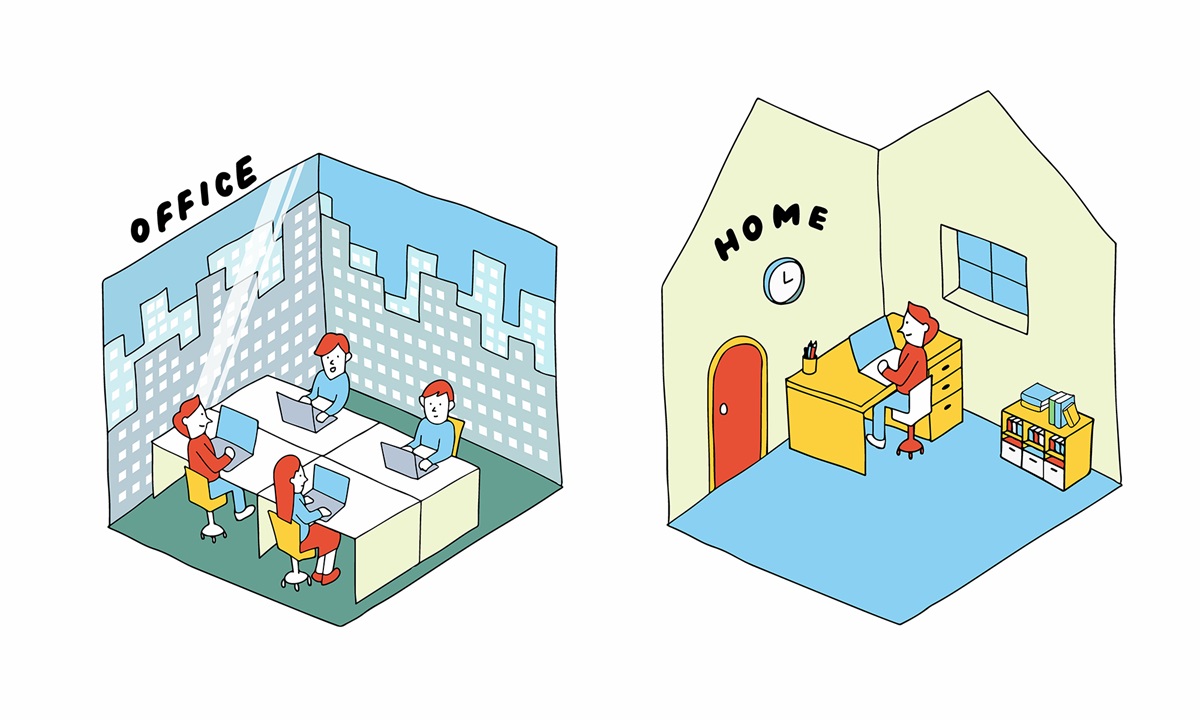In the urgency of the coronavirus pandemic, a lot of companies treated remote work as an emergency measure. At the time, management mainly focused on the fundamentals of keeping their businesses afloat. Maintaining workflows and top-down communication became the priority, with company culture as more of an afterthought.
The consequences of this oversight have been devastating on employees. Remote workers report being more lonely than their in-person counterparts, leading to lower engagement, more mental health issues, and more missed days than employees who don’t report feeling lonely. While loneliness might seem like an individual issue, the impacts of loneliness on entire organizations means management has a responsibility to step in and do better.
Despite its challenges, remote work is here to stay. With more and more managers rediscovering the importance of a positive virtual work environment, the question becomes, how do you create one? Here’s why a virtual workspace like ovice might be just what your team needs.
Table of Contents
Resist the urge to micromanage
First, it’s important to establish what not to do. Having all of your team members together in a physical space can create an illusion of control among managers. It’s easy to see who is at their desk, who appears to be working hard, and who spends most of their day gossiping by the water cooler. This sense of control disappears when teams work remotely, and many managers have been tempted to compensate by attempting remote micromanagement.
All sorts of monitoring tools have been created for the purpose of reassuring nervous managers. It’s now possible to track everything from time spent logged in, to an employee’s mouse usage and number of keystrokes. However, none of these measures are guaranteed to ensure the productivity of your employees. For each new monitoring tool on the market, there exists a workaround. No amount of micromanagement will prevent an employee who doesn’t want to work from not working.
A far more effective way to manage your team remotely is to create an environment where employees feel engaged in the work they do. Maintaining a positive remote office culture is complicated, but with the right tools and the right direction, it can be done.
Create opportunities for collision
When we look at work through the lens of productivity and workflows, it’s easy to miss some of the key elements necessary to making a great workplace. One key element to a happy and productive team is what is known as a “casual collision.” Think about any time when two employees who don’t normally work together accidentally bump into each other and begin talking about work-related topics.
Casual collisions are critical to effective teamwork, and they are a major casualty of the remote work era. When every meeting has to be planned and scheduled, it’s difficult to tap your colleague on the shoulder and pencil in a meeting about nothing in particular. Brainstorming sessions are very popular, but they tend to be between people who are used to working together, or within the same team with regard to a specific project. Many companies working remotely have lost those water-cooler moments that result in new and innovative ideas, bridges between different departments, and valuable opportunities to exchange information about the state of the company.
Management can play a critical role in bringing those collisions back to the forefront. The first step is to create a permission structure where employees are not only allowed to seek out new connections, but encouraged to do so. Give employees the time and the leeway to have casual conversations outside of their normal work circles.
The second step is to create a space in which those collisions can happen. This can be tricky, since casual interactions are most effective if they stay casual, which means you can’t force your employees to collide.
Let fun times happen organically
Fostering positive workplace interactions is about more than organizing the occasional virtual happy hour. Managers cannot micromanage their way toward better teamwork any more than they can micromanage their way toward greater productivity. Company culture has an important organic component.
A common mistake we see in many online workspaces is trying to make company culture better by organizing mandatory online get-togethers. A few of these, well-timed and with input from the entire team, can indeed help overcome some of the loneliness and disconnection employees feel when working remotely. However, over time, employees will begin to perceive those mandatory get-togethers as a burden, and they will become counterproductive. You can’t create office friendships by forcing people to have fun every Friday from 4pm to 6pm.
Instead, the solution is to emulate the successful environmental factors we see in traditional office settings. Casual collisions happen when employees can see each other. When they have free time to hang around and chat. When they know that the conversation is not going to take up too much of their time. In other words, managers should seek to create a space where casual interactions are low cost and high reward.
But how can you do so in a virtual office space? Water cooler conversations happen because you see people hanging out near the water cooler. Coffee breaks lead to interesting discussions because you can easily swing by someone’s desk and invite them to get a coffee. But what does a virtual coffee break look like? That’s where technology comes in.
The best of in-person conversations, but online
We’ve all experienced the benefits of email, file sharing and video conferencing software for remote work. Sharing information is the backbone of all teamwork. However, the software we use has a direct impact on types of relationships team members can have with one another. Email is most useful for when you have a specific message you want to convey to a specific person. Without body language and auditory cues, email and text communication carry a greater risk of misunderstandings, which is why they’re not an ideal medium for casual conversation or collisions.
Video reintroduces auditory and non-verbal cues, providing a more complete interaction. However, most video conferencing technology has a scheduling component. You need to figure out when the person you want to talk to is free, block out a fixed amount of time, and provide at least some idea of what you want to talk about. Some companies get around this obstacle by encouraging small-talk sessions, especially between managers and employees. Casual 1-on-1 conversations are an excellent way to build a workplace relationship, and should be a part of every manager’s toolbox. It’s also easy to schedule regular 1-on-1s between managers and employees when the need for collaboration and coordination are obvious. But what about between people who don’t usually work together? Here, most video conferencing software falls short.
In the end, the only solution to allow for casual collisions and a broad range of interactions between remote workers is to have a virtual workspace. Technologies like ovice allow you to see who is currently available and open to have a casual conversation. You can easily set up your own virtual coffee break area, where employees from around the company can come together and hang out, discuss new ideas, and get to know each other organically. It’s even easier than in-person office interactions, since you don’t have to physically run around the office, nor worry about the coffee machine getting too crowded!
Bolstering productivity in the workplace is not just about how individual employees perform the tasks assigned to them. Employee engagement starts with a positive environment, which can’t be achieved if your employees feel lonely and disconnected. At the same time, remote work isn’t going anywhere. By figuring out the greatest benefits of physical office work and bringing them online, managers can combine the best of both worlds.


